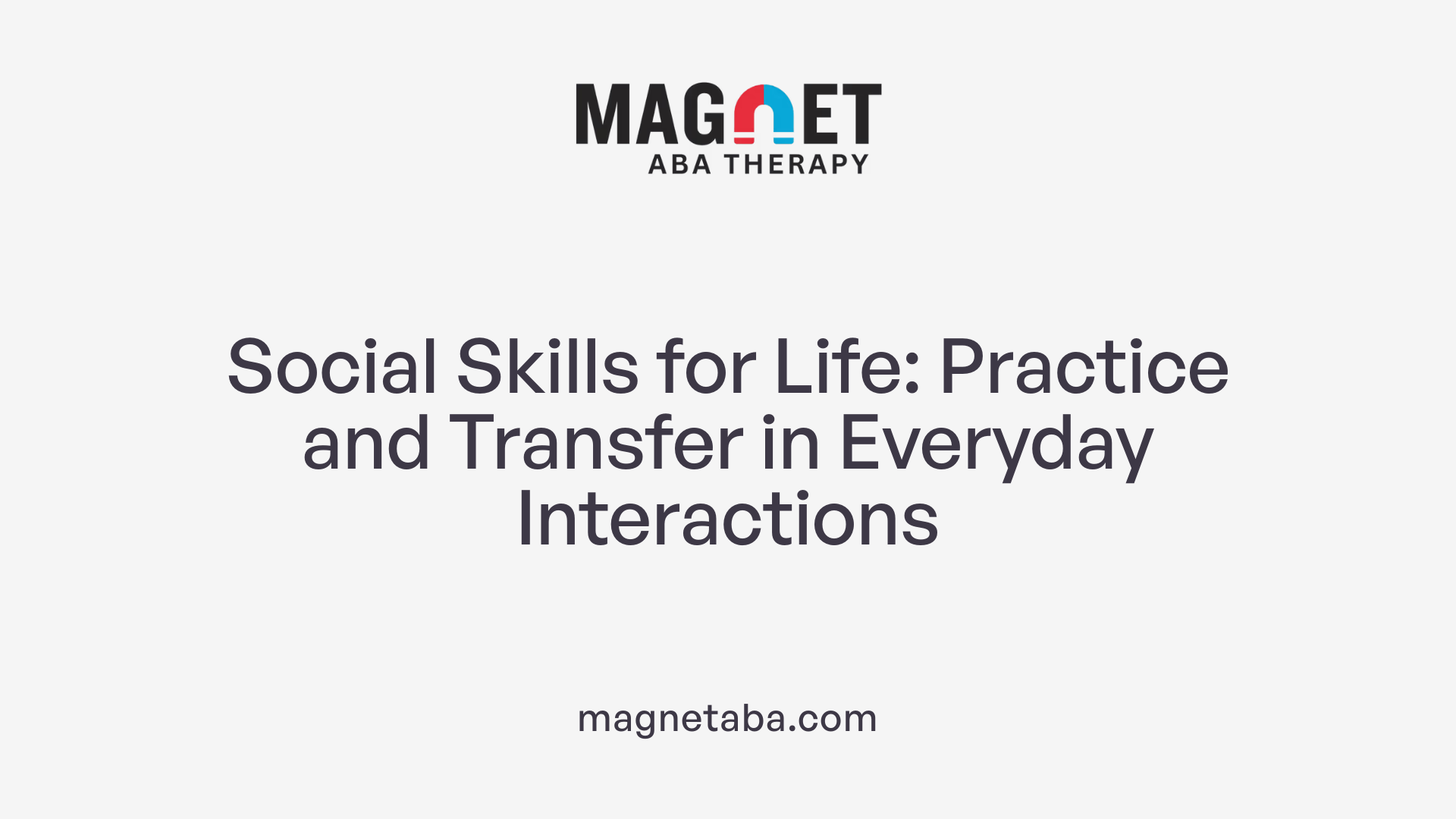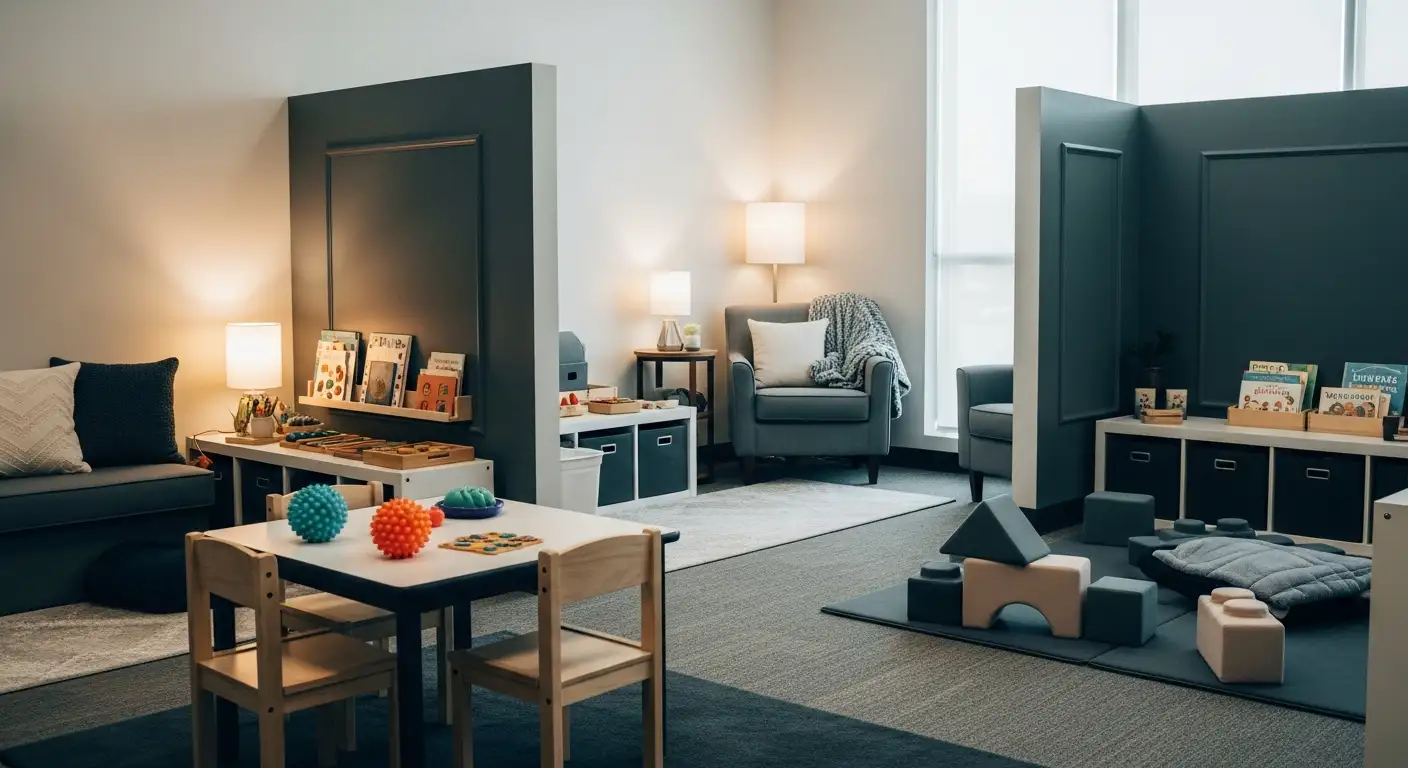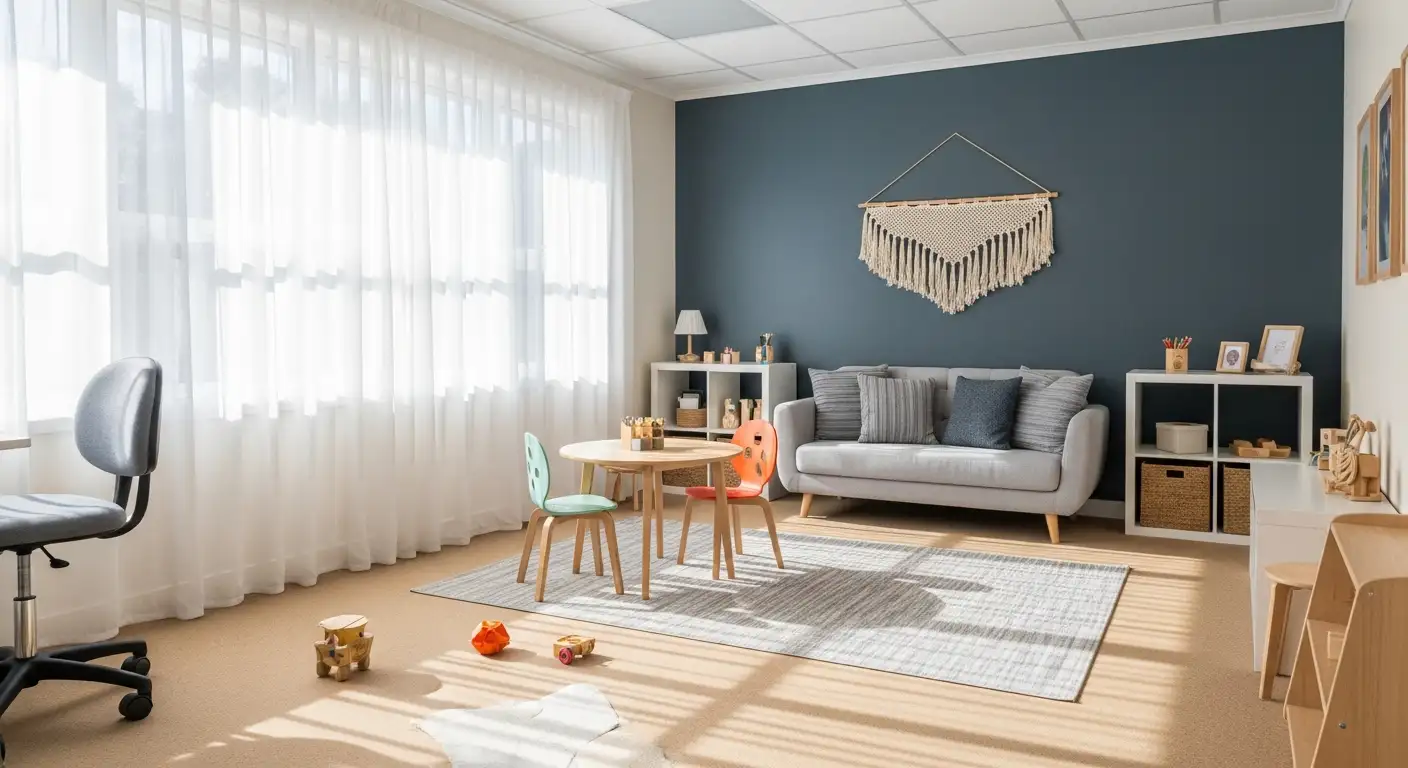Understanding ABA Therapy and Its Providers
Applied Behavior Analysis (ABA) therapy is a scientifically backed approach that aims to improve behaviors and develop new skills in children with autism. Delivered by specialized professionals such as Board Certified Behavior Analysts (BCBAs) and Registered Behavior Technicians (RBTs), ABA utilizes evidence-based methods like positive reinforcement, structured learning, and naturalistic teaching. This therapy focuses on a broad range of abilities, including communication, social interaction, and daily living skills, with an emphasis on helping children generalize these skills beyond clinical settings for greater independence.
What is ABA Therapy and Who Provides It?
What is therapy focused on autism and behavioral analysis?
Applied Behavior Analysis (ABA) therapy is an evidence-based approach designed to improve helpful behaviors and reduce harmful ones in children with autism. It relies on principles such as positive reinforcement and understanding how environmental factors shape behavior. ABA breaks down complex skills into manageable parts, teaching communication, social interaction, daily living, and academic abilities. Therapy often uses structured methods like Discrete Trial Training and naturalistic teaching strategies, incorporating play and real-world settings to help children generalize skills across various environments. The goal is to promote independence and improve quality of life through individualized treatment plans supported by extensive research.
Who provides autism and behavioral analysis therapy?
ABA therapy is provided by trained and certified professionals. The lead experts are Board Certified Behavior Analysts (BCBAs) who develop customized programs based on thorough assessments and ongoing data collection. Therapy delivery often involves multidisciplinary teams, including Registered Behavior Technicians (RBTs) who implement treatment under supervision. Licensed therapists and clinicians with specialized knowledge in behavioral sciences also contribute to therapy. Many providers obtain certifications like BCBA or Certified Autism Specialist (CAS) to ensure a high standard of care. Both clinical professionals and specialized autism service companies offer ABA to meet the specific needs of children with autism spectrum disorder (ASD).
The Importance of Generalization in ABA Therapy

What is Generalization in ABA Therapy?
Generalization in ABA therapy involves the transfer of skills learned in a specific setting, such as therapy sessions, to everyday life environments. This means that a child with autism not only performs a skill during therapy but can also apply it at home, school, or in the community. For example, a child learning how to request a snack during therapy might also request snacks at home or in a store.
What Are the Types of Generalization?
There are two main types of generalization that ABA therapy focuses on:
- Stimulus Generalization: Recognizing and responding similarly to different but related stimuli. For instance, a child learns to identify and respond to various door signs, not just the one used in therapy.
- Response Generalization: Applying learned responses in different ways. For example, a child uses multiple responses to the question, "How are you?" such as "I'm good," "I'm fine," or "Doing well."
These two types work together to create flexible and adaptable behaviors across different settings and situations.
Why is Generalization Significant for Independence and Adaptive Behavior?
Generalization is crucial because it allows children to use their learned skills beyond controlled environments, fostering greater independence. Successfully generalized skills improve confidence and functional behavior, enabling children to navigate social situations, communicate needs, and solve problems in real life. This adaptability supports development toward independent living and better social integration.
Effective generalization also involves caregiver participation, natural reinforcers, and practice across diverse environments, all of which help solidify behaviors as part of everyday life. Without this transfer, skills learned in therapy might remain confined to specific sessions, limiting their real-world usefulness.
Creating a Structured Home Environment to Support Skill Transfer
Why Are Structured Routines Important in ABA Therapy?
Structured routines at home provide children with autism a clear and predictable framework. This stability lessens anxiety and distractions, allowing children to focus more effectively on learning and practicing new behaviors. When daily activities follow a consistent sequence, children better anticipate what comes next, facilitating smoother transitions and greater engagement.
How Do Stable Environments Aid Learning?
A stable environment is one where distractions and unpredictabilities are minimized. Such environments help reinforce learning by giving children consistent cues and contexts to practice skills. For example, having designated spaces for activities like learning, eating, and play helps children associate behaviors with settings, making skill acquisition more intuitive.
What Role Does Daily Practice and Consistency Play?
Consistent daily practice is critical to generalizing learned skills beyond therapy sessions. Parents can support this by integrating skill practice into everyday routines, using positive reinforcement such as praise or small rewards. Regular practice and reinforcement help maintain skills over time, encouraging children to apply behaviors across various real-life situations.
By combining structured routines, stable learning environments, and daily consistent practice, parents create an optimal home setting that supports effective skill transfer and behavior generalization in ABA therapy.
Caregiver Involvement: Key to Enhancing Generalization

Why is educating parents on ABA principles important?
Educating parents on the principles of ABA therapy equips them with the knowledge to support their child's learning effectively. Understanding techniques like positive reinforcement and structured routines allows caregivers to create a supportive environment that fosters skill application beyond therapy sessions. This education ensures that parents can identify opportunities for their child to practice new behaviors in everyday settings.
How does active participation and reinforcement at home support skill generalization?
Active participation from caregivers involves consistently applying ABA strategies such as using rewards and verbal praise when children demonstrate desired behaviors. Reinforcement at home encourages children to repeat learned skills, strengthening retention and promoting independence. Regular practice within natural settings like the home or community also helps children adapt their skills to various environments and social situations.
What is the role of collaboration with ABA professionals in developing tailored strategies?
Collaborating with ABA professionals—such as Registered Behavior Technicians (RBTs) and Board Certified Behavior Analysts (BCBAs)—is essential for tailoring interventions that address individual children's needs. Professionals provide guidance on specific techniques and adjustments, monitor progress, and offer support to caregivers. This partnership ensures that strategies are personalized, effectively implemented at home, and aligned with the child’s developmental goals, which enhances the generalization of skills across contexts.
Strategies to Promote Generalization Across Settings

How Can Varying Therapy Environments Support Skill Generalization?
Changing the therapy environment is a powerful way to promote adaptability in children receiving ABA therapy. By conducting sessions not only at home but also in places like parks and stores, children learn to apply their skills in diverse settings. This variation helps them transfer behaviors from therapy to real life, increasing independence and confidence across contexts.
What Role Do Natural Reinforcers Play in Generalization?
Natural reinforcers are real-life outcomes or rewards that naturally follow a behavior. Using these helps children understand the connection between their actions and real-world consequences. For example, if a child requests a snack and receives it, the natural reinforcement encourages repeating that behavior in other settings beyond therapy, making the learning meaningful and applicable.
How Do Modeling, Role-Playing, and Peer Interactions Enhance Generalization?
Modeling behaviors, role-playing scenarios, and peer interactions provide practical and social opportunities for children to practice skills safely. These techniques replicate everyday social situations, allowing children to rehearse and generalize behaviors such as communication, cooperation, and problem-solving. Engaging with peers also fosters social skills and supports skill transfer to broader social environments.
Together, these strategies create a comprehensive approach for helping children with autism apply learned skills flexibly and confidently in their daily lives, ensuring therapy gains are durable and functional.
Incorporating Social Skills Training for Broader Application

Group Social Skills Training
Group social skills training in ABA therapy provides children with autism valuable opportunities to practice essential social abilities such as teamwork, communication, and problem-solving. These sessions create a supportive social environment where children can interact with peers, helping them build confidence and social competence.
Teaching Non-Verbal Communication
ABA therapists emphasize non-verbal communication skills, teaching children to understand and interpret body language, facial expressions, and tone of voice. Techniques like video modeling allow children to observe and learn appropriate social cues, which are critical for successful interactions beyond therapy.
Conflict Resolution and Problem-Solving
An important component of social skills training involves teaching children how to navigate disagreements and resolve conflicts constructively. Through structured lessons, children learn strategies to form positive relationships and handle social challenges effectively.
Real-Life Social Interactions
ABA therapy focuses on generalizing learned social skills into everyday scenarios. For example, children practice requesting snacks or greeting others during therapy, which then transfer into real-world situations like restaurants or playgrounds. This helps foster independence and enhances their functional social abilities.
By combining group activities, non-verbal cues, and problem-solving strategies, ABA therapy ensures that children with autism can apply their social skills across a variety of real-life settings, promoting greater adaptability and social success.
Sustaining Skills Through Maintenance and Real-World Practice

What is Skill Maintenance in ABA Therapy?
Skill maintenance refers to the consistent retention and application of learned skills over time. In ABA therapy, it ensures that behaviors acquired during sessions continue to be used effectively in everyday life. Maintaining skills is vital because it supports the child's independence and confidence across various situations and environments.
How Do Fading Prompts Support Skill Maintenance?
Fading prompts is a strategic technique where caregivers and therapists gradually reduce assistance as the child becomes more proficient at a skill. This approach encourages children to perform behaviors with increasing independence. For example, a parent might start by giving a full verbal cue and then slowly switch to a subtle gesture or pause to allow the child to respond independently.
Why is Daily Use of Learned Behaviors in Natural Contexts Important?
Daily incorporation of skills in natural settings—such as at home, parks, or stores—reinforces their relevance and functionality. Using learned behaviors regularly with real-life consequences helps children connect these skills to meaningful outcomes, enhancing generalization. It also allows caregivers to provide natural reinforcers and consistent practice, which promotes long-term retention.
Caregiver involvement plays a major role in sustaining skills by embedding practice opportunities throughout the child's daily routine. This consistent application across varied environments supports the child's ability to transfer and maintain skills beyond therapy sessions, improving overall behavioral outcomes.
Fostering Independence through Home-Based Generalization Support
Generalization is a critical component of ABA therapy that transforms skills learned in clinical settings into practical abilities applicable in everyday life. By creating structured home environments, actively involving caregivers, and employing diverse strategies like natural reinforcement and varied social settings, families play an essential role in supporting their children's development. Collaboration with ABA professionals ensures personalized plans that address unique challenges and maximize progress — ultimately nurturing greater independence, confidence, and quality of life for children with autism.
References
- How to Incorporate ABA Therapy at Home
- 5 Powerful Generalization ABA Examples You Need to Know
- Developing Social Skills Through ABA Therapy for Autism
- Generalization in ABA Therapy: an Overview
- Applied Behavior Analysis (ABA)
- Applied Behavior Analysis (ABA)
- Applied Behavior Analysis in Children and Youth with Autism ...
- The Controversy Around ABA
- A Treatment Summary of Applied Behavior Analysis
- How to Become a Certified Autism Specialist - GSEP Blog











